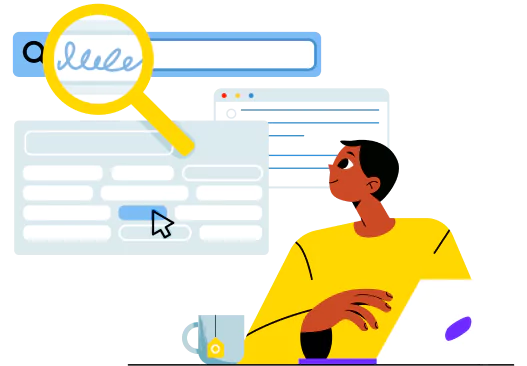
What is a Website?
A website is a collection of related web pages that are typically accessible through a specific domain name and hosted on a web server. It is a digital platform used to share information, content, and services with users over the internet. Websites can vary widely in content and purpose, ranging from personal blogs and portfolio sites to e-commerce stores, news portals, and corporate websites.
Key components of a website include:
(1) Web Pages: Individual pages containing text, images, videos, and other multimedia content.
(2) Navigation Menu: A menu or navigation bar that allows users to easily navigate between different pages of the website.
(3) Content: Information, articles, blog posts, product listings, or any other content relevant to the website's purpose.
(4) Design/Layout: The visual appearance and layout of the website, including color schemes, typography, and arrangement of content.
(5) Domain Name: The unique address that users type into their web browsers to access the website (e.g., www.example.com).
(6) Web Hosting: The service that stores and serves the website's files and content to users over the internet.
Websites serve various purposes, such as providing information, promoting products or services, facilitating communication, and enabling transactions. They play a crucial role in establishing an online presence for individuals, businesses, organizations, and institutions in today's digital age.
How website is useful for any business?
A website is incredibly useful for businesses in several ways:
(1) Online Presence: A website serves as your online storefront, allowing potential customers to find you on the internet. It provides a central hub where people can learn about your business, products, and services, regardless of their location or time zone.
(2) Credibility and Trust: In today's digital age, having a professional-looking website instills trust and credibility in your brand. It gives the impression that your business is legitimate, established, and invested in providing quality products or services.
(3) 24/7 Accessibility: Unlike a physical store with set operating hours, a website is accessible 24/7, allowing customers to interact with your business at their convenience. This means potential customers can learn about your offerings, make purchases, or contact you anytime, day or night.
(4) Reach and Expansion: A website expands your reach beyond your local area or region, allowing you to attract customers from around the world. With effective search engine optimization (SEO) strategies, your website can rank higher in search engine results, increasing visibility and attracting more organic traffic.
(5) Marketing and Promotion: A website serves as a powerful marketing tool, enabling you to showcase your products or services, share valuable content, and engage with your target audience through blogs, social media integration, email newsletters, and more. It provides a platform to promote special offers, discounts, or events to attract and retain customers.
(6) Customer Interaction and Support: A website facilitates communication and interaction with customers through contact forms, live chat, or FAQs. It allows you to address customer inquiries, provide support, and gather feedback to improve your products or services.
(7) Data Analytics and Insights: With tools like Google Analytics, you can track and analyze website traffic, user behavior, and conversion metrics. This data provides valuable insights into your audience demographics, preferences, and buying patterns, helping you make informed decisions to optimize your website and marketing strategies.
Why to learn Website design and development?
Learning website design and development involves learning how to build and maintain websites using a combination of technologies such as HTML, CSS, and JavaScript. Here are some steps you can take to get started:
(1) Familiarize yourself with HTML and CSS: HTML (HyperText Markup Language) is the standard markup language for creating web pages, and CSS (Cascading Style Sheets) is a stylesheet language used for describing the look and formatting of a document written in HTML.
(2) Learn JavaScript: JavaScript is a programming language used for building interactive elements on websites, such as drop-down menus and forms.
(3) Practice building websites: The best way to learn is by doing. Create your own web pages and experiment with different design elements and functionality.
(4) Consider taking online courses or tutorials: There are many online resources available for learning website design and development, including video tutorials, online courses, and blogs.
(5) Join online communities or forums: Connect with other web developers and designers to ask questions, share your work, and get feedback.
An investment in knowledge pays the best interest.
Benjamin Franklin
It's important to keep in mind that website design and development is a constantly evolving field, so it's important to stay up to date with new technologies and best practices.








